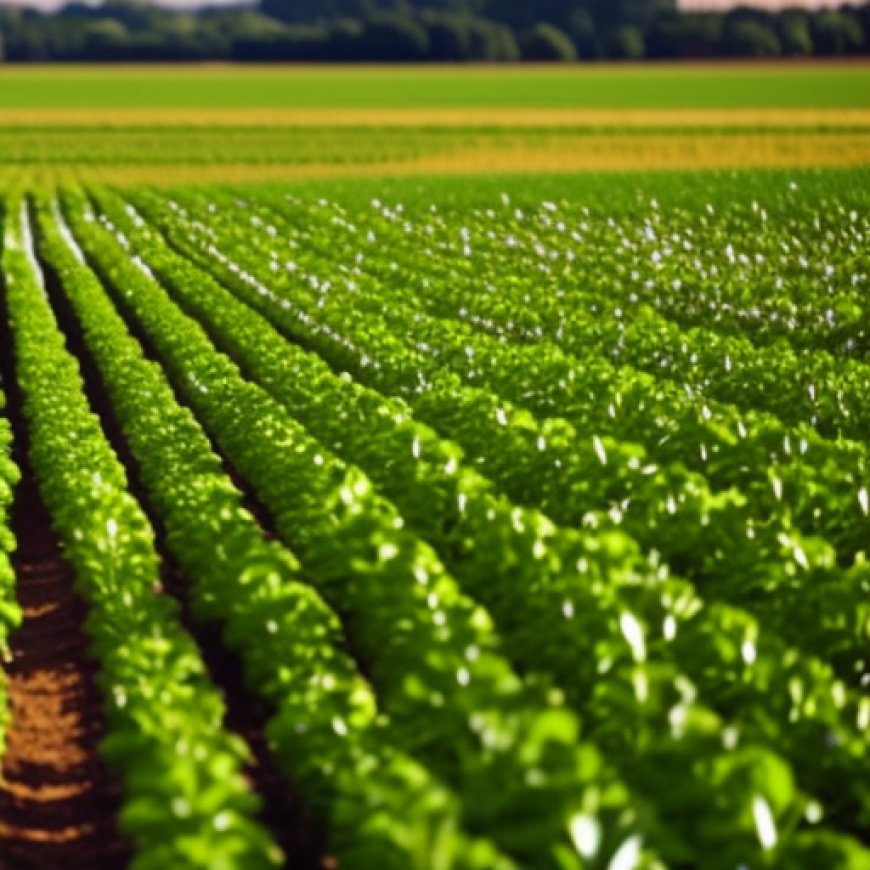Building Resilient Food Systems Through Regenerative Agriculture And Sustainable Practices
Building Resilient Food Systems Through Regenerative Agriculture And Sustainable Practices Forbes


Global Food Systems and Sustainable Development Goals
The modern globalized food system offers consumers a variety of products year-round, but it comes with significant drawbacks. These include monocrops that deplete soil and reduce biodiversity, complex supply chains reliant on petroleum, and produce bred for transportation rather than taste or nutrition. However, solutions exist to shift towards agricultural practices that regenerate the Earth while nourishing people globally.
Challenges of Food Supply Chains
Recent personal experiences with local food challenges have highlighted the complexities of our food supply chains and their social and environmental impacts. The Sorenson Impact Institute, where I serve as Chief Operating Officer, is actively learning from leaders in the food and agriculture sector who are pursuing sustainable and regenerative systems.
Regenerative Agriculture Practices
Renée Vassilos of The Nature Conservancy is working with technology companies to promote regenerative agriculture practices. GoodSAM Foods’ CEO Heather Terry emphasizes direct relationships with farmers to create equitable products while respecting cultural practices and ecological balance.
2024 Sorenson Impact Summit
At the upcoming 2024 Sorenson Impact Summit, Terry and Vassilos will discuss their work and hopes for the future of food and agricultural systems.
Supporting Regenerative Agriculture
- GoodSAM Foods: Sources from regeneratively farmed systems worldwide, providing farmers with year-round income and offering a diverse range of products.
- The Nature Conservancy: Invests in early-stage agricultural technology companies focused on soil health-building goals and regenerative production systems.
Facilitating Partnerships
- GoodSAM Foods: Cultivates a dynamic supply network built on collaboration and shared knowledge with growers.
- The Nature Conservancy: Invests in innovative tools to support regenerative production systems, making them cost-effective and profitable.
Addressing Challenges in Regenerative Agriculture
Both GoodSAM Foods and The Nature Conservancy have encountered challenges such as certification complexities and financial risks. They address these by maintaining detailed auditing systems and piloting crop warranty programs to de-risk practice adoption.
Driving Systemic Change
GoodSAM Foods builds supply networks that integrate with local communities and cultures, fostering trust and growth. This approach focuses on collaboration, tradition, and ecological balance to create sustainable solutions for all stakeholders involved.
Conclusion
The pursuit of sustainable and regenerative food systems is crucial to achieving the Sustainable Development Goals. By addressing the challenges and working collaboratively with farmers and communities, organizations like GoodSAM Foods and The Nature Conservancy are leading the way towards a more sustainable future for our global food systems.
Analysis of SDGs in the Article
1. Which SDGs are addressed or connected to the issues highlighted in the article?
The article addresses several Sustainable Development Goals (SDGs), particularly:
- SDG 2: Zero Hunger
- SDG 12: Responsible Consumption and Production
- SDG 13: Climate Action
- SDG 15: Life on Land
2. What specific targets under those SDGs can be identified based on the article’s content?
Specific targets under the mentioned SDGs include:
- Target 2.4: Sustainable food production systems and resilient agricultural practices
- Target 12.2: Sustainable management and use of natural resources
- Target 13.1: Strengthen resilience and adaptive capacity to climate-related hazards and natural disasters
- Target 15.3: Combat desertification, restore degraded land and soil, including land affected by desertification, drought, and floods
3. Are there any indicators mentioned or implied in the article that can be used to measure progress towards the identified targets?
The article implies several indicators, such as:
- The adoption rate of regenerative agriculture practices
- The number of partnerships established with local farmers for sustainable production
- The reduction in financial risks associated with adopting new farming practices
- The level of integration between large-scale businesses and local communities for sustainable outcomes
4. Create a table with three columns titled ‘SDGs, Targets, and Indicators’
| SDGs | Targets | Indicators |
|---|---|---|
| SDG 2: Zero Hunger | Target 2.4: Sustainable food production systems and resilient agricultural practices | The adoption rate of regenerative agriculture practices |
| SDG 12: Responsible Consumption and Production | Target 12.2: Sustainable management and use of natural resources | The number of partnerships established with local farmers for sustainable production |
| SDG 13: Climate Action | Target 13.1: Strengthen resilience and adaptive capacity to climate-related hazards and natural disasters | The reduction in financial risks associated with adopting new farming practices |
| SDG 15: Life on Land | Target 15.3: Combat desertification, restore degraded land and soil, including land affected by desertification, drought, and floods | The level of integration between large-scale businesses and local communities for sustainable outcomes |
Copyright: Dive into this article, curated with care by SDG Investors Inc. Our advanced AI technology searches through vast amounts of data to spotlight how we are all moving forward with the Sustainable Development Goals. While we own the rights to this content, we invite you to share it to help spread knowledge and spark action on the SDGs.
Fuente: forbes.com

Join us, as fellow seekers of change, on a transformative journey at https://sdgtalks.ai/welcome, where you can become a member and actively contribute to shaping a brighter future.







